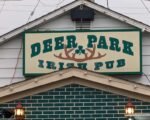Just finished painting your walls and eager to move on to the next step? Knowing how long paint takes to dry is crucial for achieving a flawless finish. In this guide, we will walk you through the drying times of different types of paint and provide expert tips to ensure your paint job looks perfect every time.
Key Takeaways:
- Not all paints dry at the same rate: Different types of paint have varying drying times, with factors like temperature, humidity, and thickness playing a role in how long it takes for paint to dry.
- Touch-dry vs. fully cured: While paint may feel dry to the touch within hours, it can take days or even weeks to fully cure and harden, so be patient before subjecting the surface to wear and tear.
- Proper ventilation is crucial: Adequate airflow can expedite the drying process, so ensure good ventilation in your painting area to help paint dry more quickly and evenly.
- Thin layers dry faster: Applying multiple thin coats of paint rather than one thick layer can help speed up the drying process, as thinner layers evaporate moisture more efficiently.
- Follow manufacturer’s guidelines: To achieve a flawless finish and ensure proper drying times, always refer to the manufacturer’s instructions on the paint can for specific recommendations and best practices.
Understanding Paint Drying Times
A crucial aspect of achieving a flawless paint finish is understanding the drying time of the paint you are working with. The drying time can vary depending on several factors, so it’s vital to familiarize yourself with them to ensure your paint job turns out just the way you want it.
Factors Affecting Paint Drying Time
- Ambient temperature and humidity levels in your painting environment
- The type and brand of paint you are using
- The thickness of the paint application
- The surface being painted (porous surfaces may absorb moisture and extend drying time)
- Proper ventilation in the painting area
Knowing how these factors can influence drying time will help you plan your painting project effectively and achieve the best results.

Different Types of Paint and Their Drying Times
- Water-based paints typically dry faster than oil-based paints
- Latex paints generally dry to the touch within 1 hour and can be recoated in 4 hours
- Oil-based paints may require 6-8 hours to dry to the touch and up to 24 hours before recoating
- Primer usually dries faster than paint and can be recoated in as little as 1 hour
- Specialized paints like enamels or epoxies may have longer drying times, up to 24 hours or more
| Paint Type | Drying Time |
|---|---|
| Water-based | Dries within 1 hour |
| Oil-based | Dries in 6-8 hours |
| Latex | Dries in 4 hours |
| Enamels | Can take up to 24 hours to dry |
| Primer | Dries in as little as 1 hour |
Tips for Achieving a Flawless Finish
Even if you have the best quality paint, achieving a flawless finish also depends on how well you prepare the surface before painting. Make sure to clean and sand the surface properly to remove any dirt, grease, or imperfections. This will help the paint adhere better and result in a smoother finish.
Preparing the Surface
Achieving a flawless finish starts with preparing the surface correctly. Before you start painting, make sure to fill any holes or cracks, and then sand the surface until it is smooth to the touch. This will ensure that the paint goes on evenly and covers the surface completely.
The key to a flawless finish is in the preparation. Take your time to clean, repair, and prime the surface before applying the paint.
Applying the Paint Properly
Painting may seem like a simple task, but there are techniques you can use to ensure a flawless finish. When applying the paint, make sure to use smooth, even strokes in the same direction. This will help prevent streaks or inconsistent coverage. Always follow the recommended drying times between coats to avoid any imperfections.
Plus, remember to use the right tools for the job. Quality brushes and rollers can make a big difference in how the paint goes on and the overall finish of your project.
Ensuring Proper Ventilation
Achieving a flawless finish also involves ensuring proper ventilation in the area where you are painting. Good ventilation not only helps the paint dry faster but also prevents the buildup of fumes, which can be harmful to your health. Open windows and doors or use fans to keep the air circulating while you paint.
Properly ventilating the space where you are painting will not only result in a better finish but also create a healthier environment for you to work in.
Common Mistakes to Avoid
Many people make mistakes when it comes to painting, which can lead to a less-than-perfect finish on your walls. Here are some common errors to avoid to ensure you achieve a flawless result.
Rushing the Drying Process
Mistakes can happen when you try to rush the drying process of paint. It may be tempting to apply a second coat or hang a picture on the wall before the paint is completely dry, but this can result in smudges, uneven coverage, and a less durable finish. It’s crucial to allow each coat of paint an adequate amount of time to dry thoroughly before moving on to the next step.
Applying Too Many Coats
With painting, more is not always better. Applying too many coats of paint can lead to a buildup of paint on the surface, creating a thick and uneven finish. Excess paint can take longer to dry, leading to potential cracking and peeling over time. Make sure to follow the manufacturer’s recommendations for the number of coats needed for your project and avoid overdoing it.
To achieve a flawless finish, it’s crucial to apply the right number of coats based on the type of paint and the surface you are painting. Applying too many coats can result in wasted time, money, and effort, so it’s crucial to strike the right balance for a professional-looking result.
Final Words
After reading this article, you now have a better understanding of paint drying time and factors affecting it. To achieve a flawless finish, follow the manufacturer’s instructions, allow enough drying time between coats, and avoid rushing the process. By being mindful of drying variables, you can achieve professional results with patience and attention to detail. Enjoy a beautifully painted surface that lasts with care and patience.
FAQ
Q: How long does latex paint take to dry?
A: Latex paint typically dries to the touch within 1-2 hours, but it can take up to 24 hours for it to fully cure and be ready for normal use.
Q: How long does oil-based paint take to dry?
A: Oil-based paint dries much slower than latex, usually taking around 6-8 hours to dry to the touch and up to 24 hours to fully cure.
Q: How can I make paint dry faster?
A: To help paint dry faster, ensure the room is well-ventilated with proper airflow, use a dehumidifier to reduce moisture in the air, and consider using a fan to circulate air around the painted surface.
Q: Can I apply a second coat of paint before the first coat is completely dry?
A: It is recommended to wait until the first coat of paint is completely dry before applying a second coat. Applying a second coat too soon can cause the paint to blend together and result in an uneven finish.
Q: How can I tell if paint is fully dry?
A: To check if paint is fully dry, gently press your finger onto the painted surface. If it feels dry and no paint transfers to your finger, it is likely fully cured. Additionally, you can also smell the paint – if the strong paint odor has dissipated, it is a good indication that the paint is dry.














